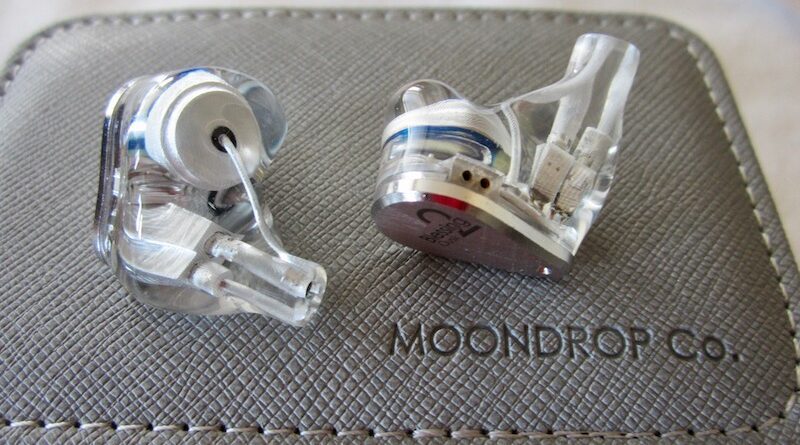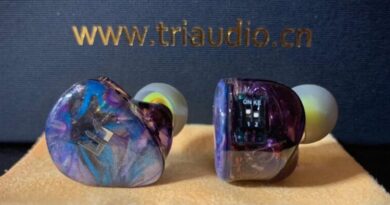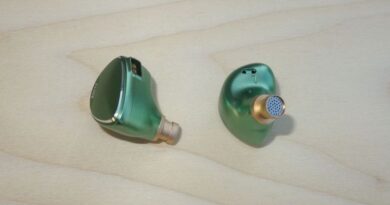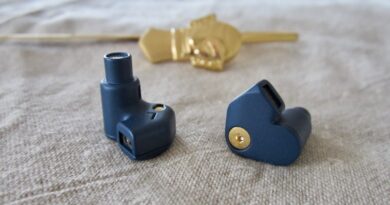Moondrop x Crinacle Blessing2:Dusk Review (1) – Big Heart Of Glass
Pros — Class leading; good tuning and resolution; not fatiguing; attractive haptic; comfortable.
Cons — BA timbre; deserves more depth; big earpieces.
In this Article
Executive Summary
The Moondrop x crinacle Blessing2:Dusk is a well-tuned, well-resolving earphone that is probably leading in its class.
Introduction
Well here we are again, in Chengdu, city of my fond memories, where Moondrop has risen high above “Chi-Fi” average. Chengdu is the capital of China’s mighty Sichuan province, known for its spicy however tasty foods – and for its panda bears….well, among others.
Moondrop have always pulled something special out of their hat, and much of it sounded a bit spicy, too. But despite the fact, that some of their models exceeded my personal hotness preference, I have always treasured them as something out of the ordinary. Many of my reviewed earphones I gave away, but not a single Moondrop.
I most recently analyzed the Moondrop Illumination, an $800 single dynamic-driver earphone, that could have made higher waves in the west with a bit less spice. And the original Blessing 2 were probably a similar case. So Moondrop brought Singaporian (gr)aficionado Corin Ako alias Crinacle on board to file a few corners off the Blessing 2. And, to take it away, he fully delivered on that purpose. But the attentive reader should also be aware that the iem was not designed by the tuner – who does not take any responsibilities for Moondrop’s “sins”.
Specifications
Drivers: 1DD (10 mm) +4BA (Treble unit: Knowles SWFK, Midrange unit: Softears D-MID-A)
Impedance: 22 Ω
Sensitivity: 117 dB/mW
Frequency Range: 20 – 20,000 Hz
Cable/Connector: 2-pin
Tested at: $330
Product page:
Purchase Link: SHENZENAUDIO
Physical Things And Usability
- MoonDrop Blessing2:Dusk IEMs
- Rectangular grey zipper hard case
- 4-strand, 6N OFC, copper-colored, Litz braided cable with 3.5mm TRS to 2-pin 0.78mm connectors ( ±125cm)
- 6 pairs of grey silicone ear tips (S, M, L)
- 3.5mm TRS to dual 3.5mm TS airline adapter
- MoonDrop logoed Velcro strap for the cable
- Card
- …thank you Trav Wison of headphonesty.com
| Appearance, haptic, and build quality: Moondrop is always good…brushed metal Faceplate, body is resin. Sturdy. |
| Ergonomics: big but light earpieces, no nozzle lips. |
| Comfort, Fit: both fine, despite the earpieces’ large size. |
| Isolation: good. |
Tonality And Technicalities
Equipment used: MacBook Air, iPhone SE (1st gen.), iPod Classic; Audioquest Dragonfly Cobalt.
The Moondrop X crinacle Blessing2:Dusk is a well-tuned non-fatiguing (!!!), neutral sounding earphone that is driven easily with virtually anything. It comes with a classic BA timbre but is probably technically superior over most earphones in its price category. It features a well textured, subtle bass with natural dynamics on top of a well-extended bottom end. I find the low-end superb in its dryness and lack of mid bass bloat. But the dose is moderate and it may not be for bass lovers. There is a tinge of warmth that elevates it above sterile. Let’s call the low end pragmatic.
Want to see a FR graph? Try the original: https://crinacle.com/2020/12/06/behind-the-scenes-moondrop-x-crinacle-blessing2dusk/ The nozzles are quite thick so that I could not get my standard eartips for measurements over them.
The transition to the midrange is not the smoothest which is a design artifact. Vocals are in the Moondrop tradition of being neutral, lean, and atmospheric, supporting a clear and transparent midrange. The fact that the upper midrange is dialled back (Crinacle’s handwriting) compared to other Moondrop models adds a bit more body and volume to the vocals, however they could still be a bit richer for my taste. But, most importantly, Crinacle prevented the looming icepick.
Treble, in typical Moondrop style, rolls off early, but the extension is just fine. And, typically BA, it sounds a bit “technical”…which justifies the early rolloff.
Bringing this together: Holistically, the Blessing2:Dusk has that crystal clear glassy midrange sound that is nicely transparent but not realistic. This is an issue inherent to this type of earphone/driver…it is part of the design.
Staging is very good horizontally and vertically, but could be deeper. Then again, Blessing2:Dusk shines in terms of definition and separation. A very articulate presentation….and that’s where its money’s in.
I find that the Blessing 2:Dusk handle synthetically produced sounds as in techno and industrial particularly well, but are less suited for rock, jazz, and orchestral.
In comparison to the Blessing 2:Dusk, the more expensive single dynamic-driver Moondrop Illumination sound much more organic, albeit a bit too bright for my gusto – and they are technically less capable. In the $300-$350 segment, the single DD Sennheiser IE300 and IE400 PRO don’t offer the Blessing 2: Dusk’s clarity and separation, but a more organic, coherent, less distorting sound in much smaller shells.
The Tuning?
Just as we want it. It would have been informative to have had the original Blessing 2 to compare to. But from my experience with Moondrop’s in-house tuning, it is kind of obvious what Crinacle did: first he made sure that the mid-bass was not bloated and second he toned down the upper midrange to avoid shoutiness, that is hardness and aggression in the middle frequencies. I am actually surprised that he did not boost the mid bass more, as I know from the JVC HA-FDX1 tuning filter discussion that he likes more bass than I do. Well done, Crinacle.

“You can always tune an earphone, but you can’t tuna fish – Unknown
—
Moondrop have been somewhat notorious for their shoutiness so that I had already proposed an upper-midrange-muffling reversible tape mod for the Moondrop Starfield and the Moondrop SSR [links bring you to the respective modding sections]. Thanks to Crinacle’s tuning, this is not necessary for this model. I suggest a similar sonic modification for the Moondrop Illumination. But, hey, as it looks, Moondrop have considered these suggestions in their recent Aria model.
Discussion: How Important Is Timbre?
Timbre (“measure of the naturalness of sound”) is strangely enough generally not included in a device’s tonality assessment but rather in “technicalities”. This is odd as many “audiophiles” sacrifice technicalities such as separation and layering for timbre. One appears to exclude the other.
Crinacle places the original Blessing 2 into the “kilobuck” category and ranks them as “Tone Grade S“, the highest of is ranking list. From my limited experienced with pricey iems, I would not disagree. The Blessing 2:Dusk as the modified younger brother (it is fair to assume that Crinacle would not rank these any lower than the original) do remind me of the $1300 AME Custom Argent in their über-midrange transparency. And that’s what you probably get elsewhere in BA-land for $1000.
The question is: how important is natural sound reproduction considering that BA timbre sounds only realistic with, let’s say, Kraftwerk’s “We are the Robots”.
Take the rustic Canadian BTO song “Four Wheel Drive”, for example. Randy Bachman’s raunchy Gretsch rhythm guitar powering custom-made Garnet amps (the famous “Winnipeg Sound”) loses much of its its meat/substance and visceral character in the glassy, crystal clear network and distortion of any BA drivers. The “Winnipeg Sound” simply retains its character better even with cheap Koss Porta-Pros.
Or take a Chopin Cello Sonata, where you seriously wonder what power supply the Cello is connected with to the mains. Again, the cello sounds more realistic with a cheap dynamic driver. Most BAs/hybrids are the sonic equivalent of overpixelated photos: sharp but unrealistic.
This begs the general question of how timbre should be graded?
Concluding Remarks
Despite the BA timbre (which is part of the game), it was a pleasure listening to the Blessing2:Dusk for a couple of weeks. I don’t think there is a technically better earphone at this price.
Until next time…keep on listening!

Disclaimers
I held the Blessing2: Dusk for two weeks as part of a tour initiated by Crinacle, before sending them on to the next reviewer, who is our very own Biodegraded. Also check out his review…coming soon.
Get the Moondrop x Crinacle Blessing2:Dusk from SHENZENAUDIO.
Our generic standard disclaimer.
You find an INDEX of our most relevant technical articles HERE.










